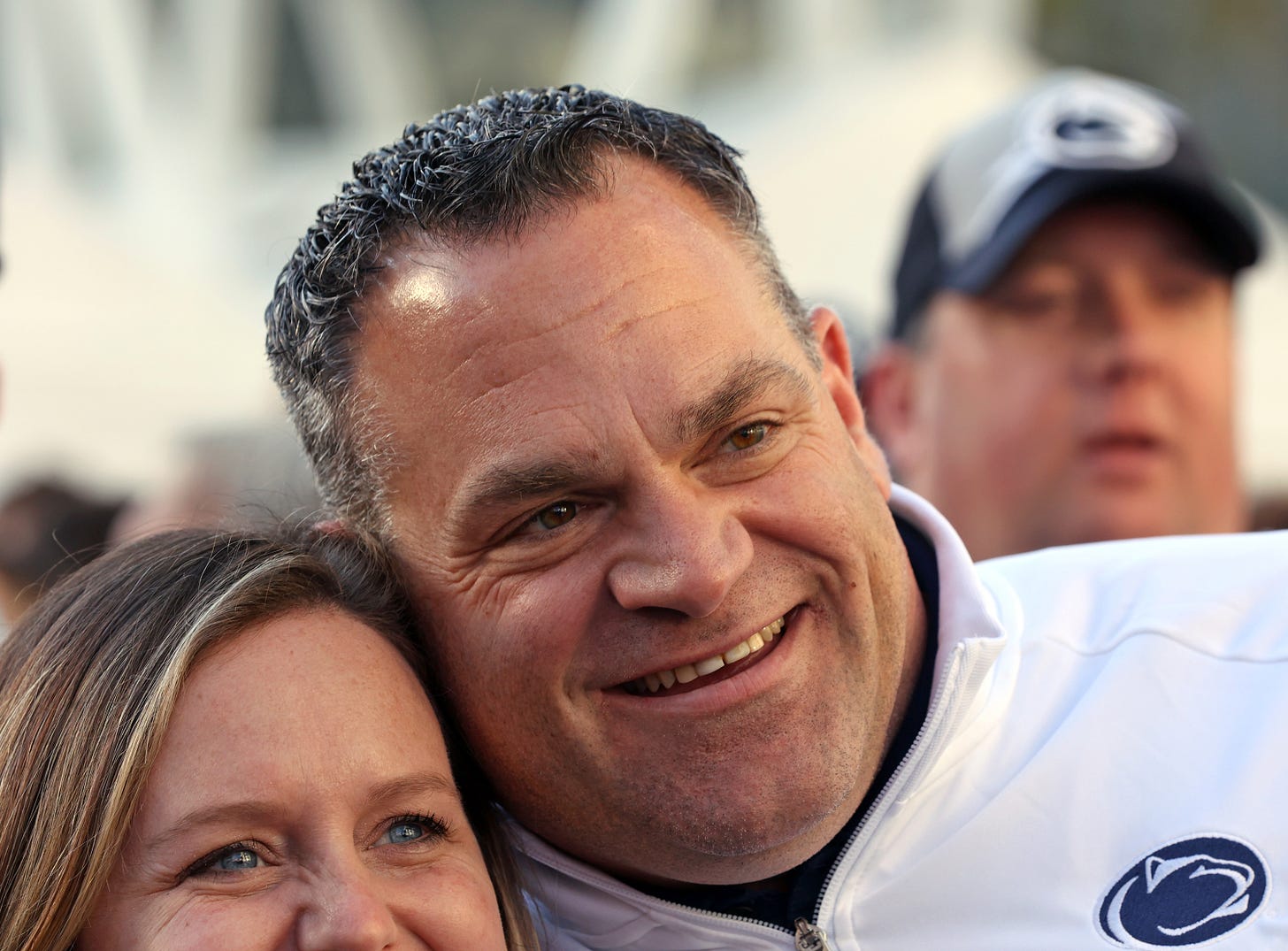Changes Underway, Pat Kraft Not Worried about the Leap
Pat Kraft is taking on one of the biggest projects in the history of Penn State Athletics.
Boiled down, Penn State’s $700 million investment into the renovation of Beaver Stadium is among the largest ongoing sports infrastructure projects in the world right now.
And while it won’t be anywhere near the cost of some mega projects like SoFi Stadium in Los Angeles - that clocking in with a reported price tag of $5.5 billion - renovating one of the largest stadiums on the planet doesn’t happen every day.
Enter Penn State Vice President of Intercollegiate Athletics, Pat Kraft.
Kraft is in an interesting position, not long removed from his first year on the job, having already overseen the start of an aggressive renovation and construction plan which has touched nearly every corner of campus and multiple sports. For a university and athletic department with a history of doing things in calm and even measure, Kraft has approached a bevy of projects with an unusual degree of aggression and enthusiasm.
Whether that is right or wrong remains to be seen. There are members of Penn State’s Board of Trustees who are apprehensive about ballooning costs and long-term debt servicing, others who see the renovation of Beaver Stadium as upgrading the university’s most frontward-facing asset, and as such, it is an unavoidable cost of doing business.
The truth is probably somewhere in the middle. Aspects of Beaver Stadium are unquestionably in need of change, upgrades and maintenance. Even if you’re of the opinion that society invests too much into sports, there is an undeniable reality that Penn State football and Penn State University at-large are intrinsically linked. That particular relationship is irreversible at this point.
At the same time there is an inherent danger in projects like these. Well intended, enthusiastically supported, and fully-funded undertakings have gone awry before. There is a leap made in the first steps of things like these, trusting that when something out of your control finally happens, it won’t derail everything else.
So there’s a moment when you have to decide that it is in fact happening. Kraft could have become Penn State’s latest athletic director to oversee plenty of success but opt to kick the the renovation of Beaver Stadium down the road to someone else before moving on with his life and nobody would have bat an eye.
Instead Penn State finds itself in the first six months of a multi-year, multi-million dollar project.
“You can’t take necessity out of it,” Kraft told me. “You really can't. I mean, it's the driver. We have to do it. We don't have another option. I believe it's an iconic building. It's so representative of who we are and what we represent, that building means so much. But we need to do this. It's in a place where it needs TLC, it's like any home that you have. So you can't just separate that … very few people would do anything unless it was necessity.”
There is the question though of the functional decision to actively start the project. Kraft once joked and/or lamented that Penn State had historically undergone multiple evaluations of Beaver Stadium’s future with no follow-up action. One might recall a presentation by Kraft’s predecessor, Sandy Barbour about all sorts of Beaver Stadium related changes that - even prior to COVID-19 - never saw the light of day for one reason or another.
And in truth there is not a safety-based imperative to upgrade the stadium. Kraft could have punted on this, he could have come up with a less aggressive approach. But he and his respective consultants did not. All told, the physical act of saying “let’s go” is a noteworthy moment.
A moment Kraft thinks Penn State has put off for far too long.
“Is it fair, or is it right for our fans to have rust falling on top of them while they’re there in the game?” Kraft said. “I don't think so. Is it fair that our concessions are inadequate? Is it fair that the bathrooms are disgusting and overflowing? I don't think so. And so when all of that comes to fruition? I don't - knock on wood - I don't think there's a tragedy that can happen.”
“But - it's why we're in this position, because you can't sit and ignore 100,000 seat stadium for a decade. You just can't, so that's why it's like, we gotta go and if you don't go now, that $700 million or whatever number you want to look at it exponentially grows more and more. There was a study to do some of the stuff we were doing. It was like $21 million at the time. But instead of doing what was right, we just sat there and we said let's just kick the can and you can't kick the can [forever].”
Is is daunting though? Kraft denies it from the perspective of sleep-losing angst. But it’s hard to imagine that even one of the most aggressive ADs in America decides to fundamentally change an iconic stadium with a price tag of nearly a billion dollars and doesn’t occasionally feel some heartburn.
But maybe not.
“I make critical decisions every single day that in some way impact 850 student athletes and their four or five years with us,” Kraft said. “So I know that's the big shiny thing, but I would not have stepped into it if I wasn't 100% confident and that's because of who we are as an institution.”
“We make really hard decisions all the time. This is just another one.”





Love having Pat Kraft in the role of AD. He is aggressive but more importantly, he is thorough snd thoughtful in his approach to what Penn State needs to remain relevant in the sports the university has chosen to compete in, and there are a lot of them compared to many other schools.